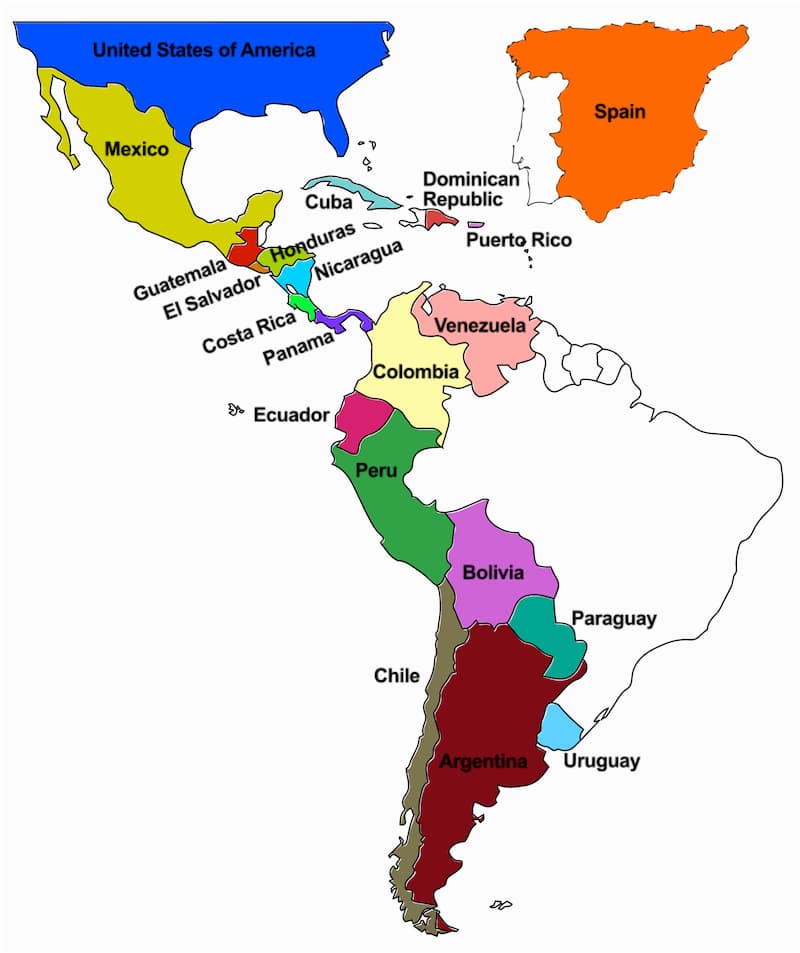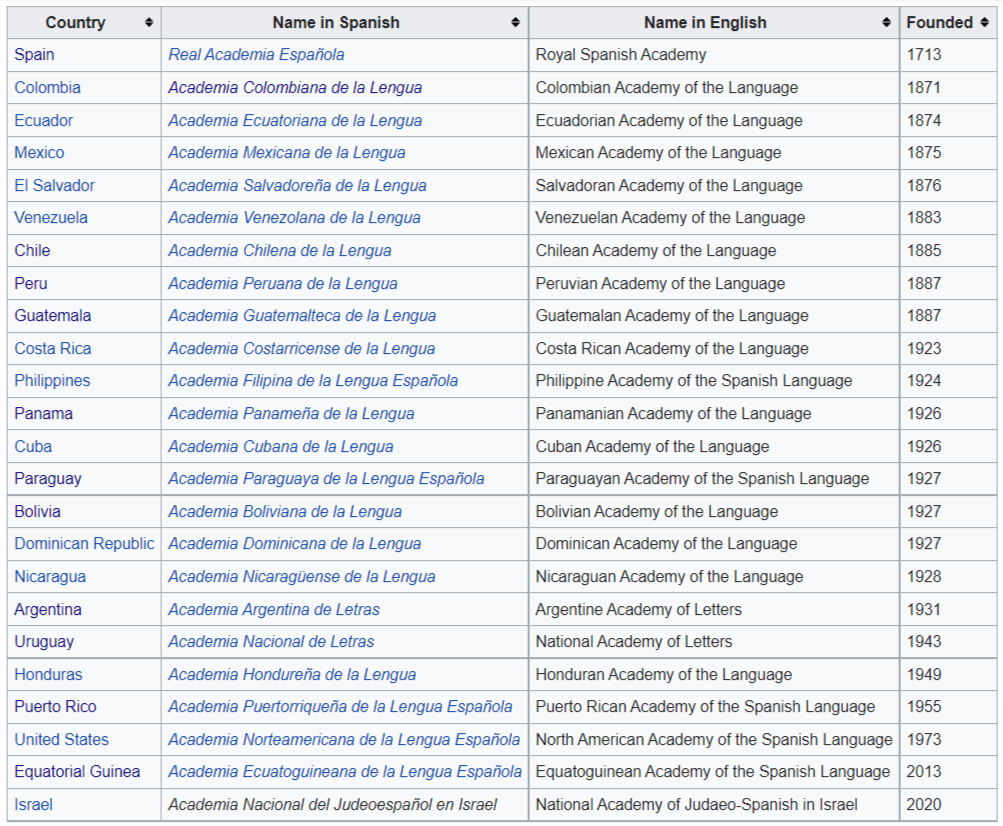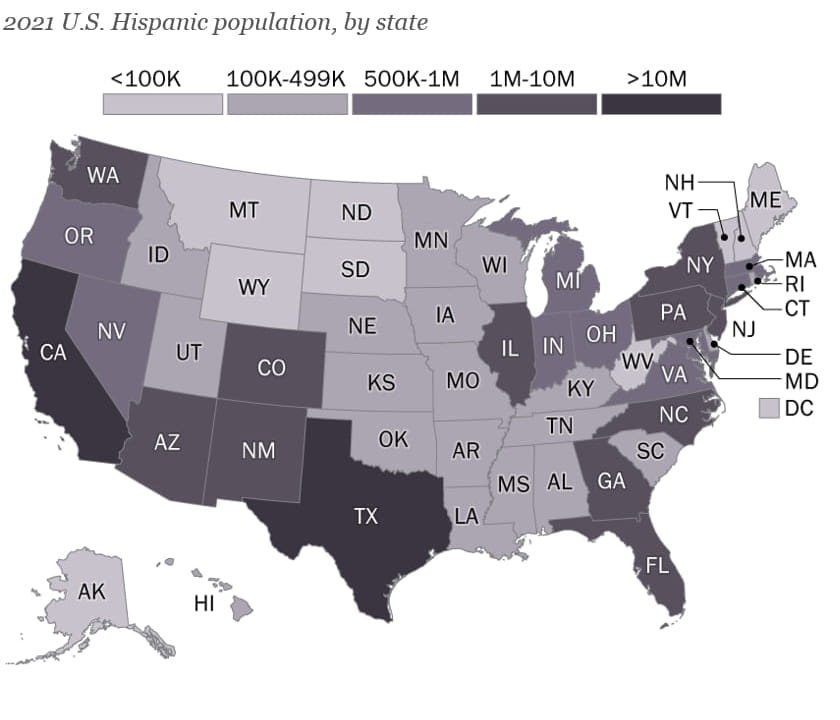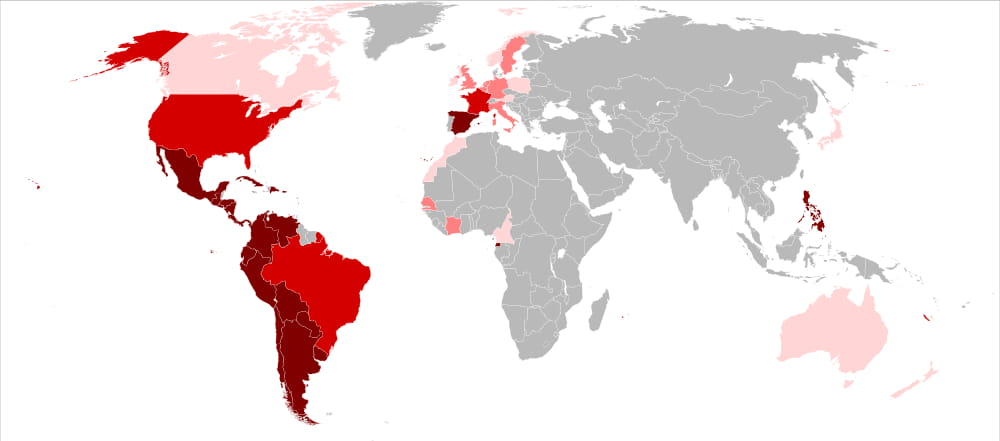Throughout my life, I’ve heard that English, French, and Chinese will be the languages of the future that will take over the world in the coming decades.
The forecast is based on some simple reasoning and recent growth. Yet Spanish checks all the right boxes for good reasons.
Today, we live in a world that is constantly changing. It’s only natural to wonder what’s next as the shift continues. What can we expect from the future?
It may catch your interest if you plan to learn, are already studying, or are fluent in Spanish.
Your curious mind may have many questions about this fantastic language.
Will Spanish continue to be as relevant tomorrow as it is now? Will the significance decline and become less prevalent as time passes? What does the future hold, and how will it show itself?
This guide covers everything about the future of the Spanish language. It will search for the answer to all such cases.
Table of Contents
The Past, Present, and Future of Spanish
The Spanish language is also known by its other names — Español, Castellano, or Castilian.
It boasts a long and notable history that spans many centuries. It is a pleasing, diverse, and beautiful language that has flourished for hundreds of years.
There have been efforts to foster language through culture, customs, cuisine, and literature. Yet, in the present day, language is at the forefront, and everything else circles it.
In the past, most people studied Spanish because they were interested in Spain or its vibrant traditions.
The wealth of literature, drama, dance, film, music, festivals, and others will continue to grow. Still, job and business opportunities are also soaring to new heights.
The Spanish language is not limited to a select few countries but has a presence across five continents.
The language has experienced rapid growth thanks to modern technology.
From teachers to study materials and learning apps to Spanish podcasts for learners, you can access them anywhere and anytime.
Today, many are charmed by the Spanish for its rich cultural heritage.
Spanish is a language of love, family, music, and economic interactions. It is a powerful force.

The current global influence of Spanish
Spanish is a widely spoken language. There are almost 500 million native speakers worldwide. If we include those who know it as a second or third language or are proficient, that number rises to 591 million.
Over 600 million people communicate in Spanish to different extents. This equates to 7.5% of the world’s population.
Spanish is the third most spoken mother tongue, after Mandarin and Hindi. It is the official language of 20 nations and 1 US territory (Puerto Rico).
This language also holds economic value in many other regions. E.g., the United States, France, Morocco, the Philippines, and Belize.
This comes as no surprise that Spanish ranks as the third most commonly used language on the internet. It accounts for 8% of use.
This is partly because of the fast-growing Hispanic-American region. In recent times, there has been an enormous growth of internet growth.
One interesting point about the Spanish speaker ratio in places where it is official.
94% of the population speaks Spanish fluently in countries where it is the official language. This number is much higher than French (34%), English (27%), and even Mandarin (roughly 70%).
The Importance of the Spanish Language
There are many reasons for the influence, relevance, and widespread use. The cultural aspects, political, and financial factors are some causes.
So, to understand Spanish’s current and future status, it is vital to look at where it is spoken.
Many international organizations recognize Spanish as their official language. Among them are WTO, Mercosur, ICC, AU, ITU, LU, ILO, EU, OAS, OSCE, NAFTA, CACM, and UNASUR.
Spanish is one of the six official languages of the United Nations. The five others are Arabic, Chinese, Russian, English, and French.
There is vast potential for developing trade relations between Spanish-speaking Latin America and top economies.
Learning Spanish offers incredible opportunities. It gives plenty of scope for those involved in global business and import-export.
With a low market share, there are vast prospects for companies within the Hispanic world. As a result, the Spanish language is a great option to operate successfully in this market.
Why is Spanish gaining popularity?

The Hispanic world’s rich history, fabulous literature, and diverse customs attract many people.
You can visit stunning places and meet welcoming people from Spanish-speaking locations. The soccer craze, delicious food, melodic music, and vibrant festivals add to its appeal.
Language is vital, even with different varieties of Spanish. It expresses the culture’s beauty, depth, uniqueness, strengths, and colors.
The Spanish-speaking region is the origin of many incredible things! This is where diverse literature, fascinating traditions, and other popular trends were born.
Cultural reasons are the main factors. Yet, many have various reasons to choose Spanish. For example, job, immigration, business, and studying abroad.
Also, many are driven by the love of dance, music, and movies.
The British Council named Spanish the “top Language for the Future.” This is because of its expected rise in global significance.
Predicting the future of Spanish is tough. We can’t always expect what will happen.
Spanish has a powerful presence in many countries. This makes it more stable and less affected by unforeseen events in one nation.
Are you looking for some convincing reasons?
Check out these five reasons to be optimistic about the future of the Spanish language.
1. The markets in Hispanic countries are booming
Argentina, Chile, Colombia, Peru, Ecuador, Bolivia, Mexico, and Spain are leading global Spanish-speaking markets.
The combined population exceeds 600 million. This is a massive market for both emerging and developed economies. They are also among the nations with the most open trading policies.
This has led to a vast network of bilateral trade agreements globally.
Spain, Argentina, and Mexico are the top choices for foreign students. Many international students attend top colleges in Uruguay, Chile, Colombia, and Costa Rica.
Hispanic universities are well-known among students for many good reasons.
Some perks include top-rating academies, affordable fees, scholarships, and quality education. They also get the time and chance to travel and dive deep into culture.
These places often use Spanish as the language of teaching. They are adding more courses in English. This appeals to a broader range of international students.
Most institutions typically require an authentic certification. This level could be a minimum B1 on the Spanish ability test DELE or SIELE.
2. The number of Spanish learners is growing
In recent years, Spanish has become increasingly popular as a second or foreign language.
The Instituto Cervantes’ 2021 edition of Spanish reports the same. They state that 24 million students are currently learning Spanish across the globe.

There are students from 111 different countries included in the number. The figure is just an estimate and may only partially be correct. Still, this number is quite impressive.
Per many statistics, Spanish is a widely studied language. For example, many experts agree it is now the fourth most-taught language globally, after English, French, and Chinese.
Because of its many advantages, Spanish is one of the most taught languages globally.
Some top motivations are exquisite vacations, Spanish-related careers, and cultural elements.
Music, dance, TV series, and films for learning Spanish are popular forms of amusement. This attracts Spanish enthusiasts from all over the place.
3. Promoting the use of Spanish
Many governments, where it is de facto or de jure, promote the Spanish language as a global initiative.
Governmental institutions can offer an effective tool for spreading.
One instance is how Instituto Cervantes acts as the Spanish government’s official representative.
Cervantes has over 90 centers in over 45 countries to promote the Spanish language and culture.
It provides Spanish teaching and hosts various cultural events throughout the year. For example, music concerts, dance performances, debates, art exhibitions, movie screenings, and more.
It also administrates the official Spanish DELE test in over 500 exam centers in more than 100 nations. Almost all organizations that need certification and scores in Spanish accept this global test.

The guardians of The Association of Academies of the Spanish Language have reasons to be happy these days. Why?
Spanish speakers have recently seen a surge despite English still being dominant.
ASALE was founded in Mexico in 1951 to advance and improve the Spanish language’s unity, integrity, and development. It comprises all academies in Spanish-speaking areas.
Currently, there are 24 member countries.
The oldest of these is the Real Academia Española of Spain, which was established in 1713. It publishes articles and studies about literature, history, culture, language, and the Hispanic world.
Private organizations are also taking initiatives to promote the language. They do this through activities like Spanish classes, cultural programs, and publications.
Take LanguageNext as an example. It is the leading Spanish institute in Noida. Its purpose is to create an awareness of the language and culture of Spanish-speaking nations.
4. Spanish is a comparatively easy language to learn
Time, effort, and patience are necessary to learn a new language. Spanish is globally helpful and straightforward to understand. This makes it an excellent choice.
Spanish is an easy language for English speakers to learn. Despite the many Spanish dialects, communication between speakers is usually effortless.
It has a Romance root in common with French, Italian, and Portuguese. Because of their Latin origins, Spanish, English, and German share many similarities.
Most Latin-based language speakers find it easy to use the Latin alphabet. It is easy to grasp grammar rules and sentence formations. But the vocabulary is vast, and it takes time to notice it.
FSI studies classify Spanish as relatively straightforward. It is English-like and in the category I. One needs 24 weeks, or 600 classroom studies, to reach an advanced level.
The US Department of State recommends adding a 1:1 ratio of classroom and self-study. This would equate to 1200 hours of Spanish studies. This will suffice for reaching a C1 level in DELE or SIELE.
There are several differences between Spanish in Europe and Latin America. The accent, vocabulary, and phrases vary, for instance. Local languages also make a meaningful impact.
You can understand Spanish despite variations in slang and new terms across countries and regions. Also, the language is broadly mutually intelligible to a vast extent.
5. Spanish is the second most common language in the USA
Can you believe there are more Spanish speakers in the USA than in Argentina, Colombia, or Spain?
That’s right!
Over 42 million people in the USA speak Spanish natively. This makes it the second-largest Spanish-speaking nation. Mexico is the only country with more Spanish speakers.
In 2021, nearly 1 in 5 (19%) people in the US are of Hispanic origin. This amounts to 62.5 million. Its presence is prominent in Arizona, California, Florida, Texas, and New York.

A 7% growth per PEW research means a significant rise by the mid-21st century. The US Census Bureau shows the country will have almost 138 million Spanish speakers by 2050.
As an effect, one-third of the population there will speak Spanish. This means that the US might become the largest Spanish-speaking nation in the world.
Spanish is a widely taught language in the USA. There are several reasons it holds value. Spanish’s global influence makes it a valuable language for international business.
Spanish is often studied to improve career and business opportunities. Or if you want to reach out to Latino Americans throughout the country.
6. More choices for career and job
In a globalized world, knowing Spanish is crucial for cross-border business contact.
Knowing Spanish can be beneficial for various sectors. For instance, tourism, banking, IT, healthcare, education, food, fashion, commerce, or design.
Business and export-import also provide various options. People learn the Spanish language globally for trade and economic purposes.
You can find many career possibilities too. Some areas of interest are outsourcing, international business, writing, editing, teaching, etc. You can make your Spanish career as a translator and interpreter.
Knowing Spanish and being bilingual can be a plus on your resume.
Speaking Spanish can increase your job and work-study opportunities in Hispanic lands. This holds especially true if you have practical skills.
The Future Prospects
Spanish is a dominant language in the fastest-growing parts of the world. For instance, Central and South America. According to Cervantes’ latest projection, roughly 750 million people will speak Spanish by 2050.
Spanish is becoming increasingly important, and its current status and potential are promising. The language of love is well-equipped to stay influential in the future.
Learning Spanish is becoming popular among non-natives. They benefit from globalization and expand their businesses.
There’s a uniform growth in the number of learners.
The adoption of Spanish has risen among associations. Firms are now adjusting their content in Spanish to reach a wider audience. To sum up, the future looks bright from all angles.
Concluding Thoughts on the Future of Spanish

If you’re looking for a language with a bright future, there are many excellent reasons to learn Spanish.
There are several incentives. E.g., global reach, relevance in today’s world, importance in business and non-profit, and immigration.
This enables you to travel confidently and fully engage yourself in culture. It can also help you study other Romance languages. It is also worth noting that it’s a language that is easy to learn.
The list is never-ending!
The demand for learning Spanish is growing worldwide, so it’s logical to choose Spanish. The future looks sparkling from personal and professional standpoints.
Spanish has so many benefits that learners worldwide may commit to learning it long-term.
Time holds the answer to whether or not it will dominate in the future.
Based on the indications and future prospects, things are looking positive. I hope you understand why I mentioned Spanish could be the future language.
LanguageNext’s Spanish experts will always help you with any Spanish-related queries.
Would you like to add to your thoughts or questions? Share your views in the comment section.











